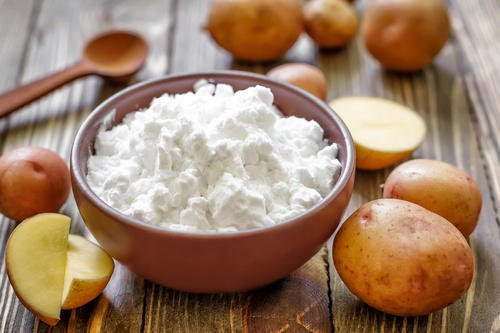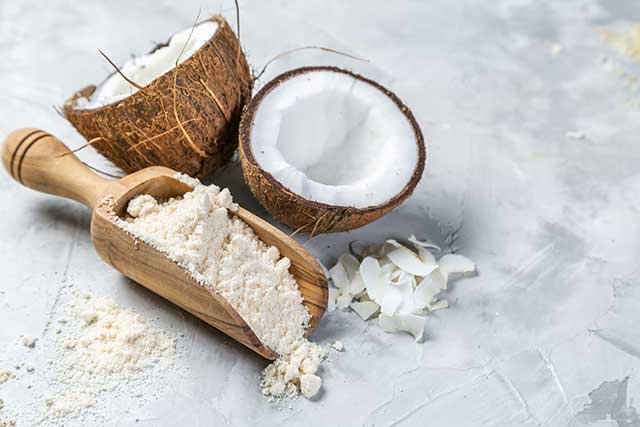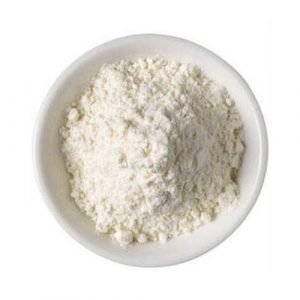This comprehensive list contains all of my favorite potato starch and potato flour choices and instructions on how to use them. You will undoubtedly discover anything that you may readily employ among the 14 possibilities!
Having potato starch on hand is a nice thing to have in the kitchen for cooking and baking, but it’s also simple to change out for other fantastic substitutes!
Do you have any questions about potato starch? Alternatively, how should it be used? Perhaps you’re creating your gluten-free flour at home and have run out of potato starch, or you don’t have any on hand because you don’t have any.
I’ve got the answers to all of your questions about potato starch, no matter what you’re looking for it or what you want to do with it. Along with the absolute most acceptable potato starch alternatives, suggestions for their purposes, including whether they’ll work for cooking, baking, or frying, and instructions on how to utilize them are included!

WHERE CAN I FIND POTATO STARCH?
Potato starch is derived from potatoes, which is astonishing! Potatoes are crushed during this extraction process, releasing starch granules (known as leucoplasts) into the atmosphere.
The starch grains are then cleaned and dried until ground into a powder, which is ultimately converted into potato starch. It has no fragrance or flavor, has a soft white color, and hardens into a mainly transparent, thick, gel-like paste when heated.
It’s also gluten-free, thanks to potato starch! This is one of the reasons why it has grown more popular in recent years for use in baking, frying, and other food preparation.
WHAT IS THE PURPOSE OF POTATO STARCH?
Potato starch is a ubiquitous ingredient in both baking and cooking. It may be used as a thickening ingredient in various dishes, both sweet and savory, hot and cold, including soups, gravies, pie fillings, sauces, stews, and casseroles, among other things. you can also make a batter of potato flour with other spice of your choice and water and then mix some potato wedges in it to grill them, roast them, fry them, or bake them to make a tasty potato dish which goes best with bbq sauce, hoisin sauce, tomato sauce etc.
This gluten-free flour substitute may also be used in muffin and bread recipes. It is also an excellent option for frying meat, fish, and vegetables since it produces a flawlessly crispy, golden coating. This flexible gluten-free thickening agent is the ideal pantry staple, and it is beneficial for Passover or any other occasion when wheat is not permitted.
If you appreciate quick soups, hot dogs, noodles, potato chips, and sponge cakes, you’ve probably already had a taste for potato starch items (potato starch adds that lovely, soft texture). In addition, potato starch is one of the components used in shredded cheese packaging to prevent it from clumping together during transport.
POTATO STARCH AS COMPARED TO POTATO FLOUR
Potato starch is produced using a technique in which just the starch is extracted from the potato.
When it comes to potato flour, the chunks of potatoes have been peeled and sliced before being dried and dehydrated before being ground into flour. In contrast to potato starch, potato flour often tastes like potatoes and has a wheat-like look in terms of both color (white and off-white) and texture (smooth and crumbly, like wheat).
Even though they are manufactured from potatoes, they should not be used in the same way or as alternatives. Your recipe’s color, flavor, and texture may be compromised as a result of this. After putting in the effort (and the money!) into your product, it is wise to choose a reputable substitute.
To summarize, don’t be concerned if your recipe asks for potato starch and you don’t have any on hand. Check out the list of options provided below for further information.
POTATO STARCH SUBSTITUTES AND POTATO FLOUR ALTERNATIVES
In general, cornstarch is my first pick for a fast potato starch substitute since it is so readily available. However, arrowroot powder is the most outstanding thickening agent and baking ingredient general when it comes to gluten-free baking and cooking.
-
CORNSTARCH
Cornstarch, has no flavor or color and is unpalatable to humans. This regularly used popular thickening agent is well-known for its ability to turn any dish slick and shiny, and it may be employed in a normal 1:1 ratio with other ingredients.
The majority of cornstarch, which is derived solely from maize, is also gluten-free.
-
POWDER FOR ARROWROOTS
Arrowroot powder is derived from arrowroot plant, which is found in West Indies, and other places like south America etc. Arrowroot, which is also colorless, may be used in dishes that calls for potato starch, such as baking.
It’s an excellent pantry staple since it has a shelf life of 3-4 years and because it’s gluten-free and paleo-friendly as well. Replace one tablespoon of potato starch with two tablespoons of arrowroot starch if you like a different texture.

-
STARCH FROM TAPIOCA
A similarity exists between tapioca starch and arrowroot is that both are derived from the root of a their respective plant that may be found in American region of central and southern parts. It is the same as cassava or yucca, which means that if you have heard about them, you are already acquainted with tapioca!
The 1 to 1 replacement ratio may be used for minor changes, such as thickening sauces or stews. Try adding 25-50 percent more flour than the recipe asks for and reducing the amount of flour-like components by a bit of amount so that the overall volume stays correct when making more extensive replacements, such as a cake or bread mix. Be careful not to use too much tapioca starch. Otherwise, the final dish may become excessively sticky or thick, depending on how much you use.
-
POTATO FLOUR
However, since potato flour differs from potato starch (as previously stated), it may still be used as a replacement in a simple 1:1 ratio with potato starch. Consider the potato flavor that it may provide to your completed dish; it is maybe better used in savory dishes or for frying rather than baking.
-
MASHED POTATOES
This is a unique replacement! As an alternative to potato starch, make use of an excellent classic potato mixture Pulse the ingredients in a blender until they are a fine powder, then use a simple 1:1 ratio. you can also use frozen potatoes to make mashed potatoes which are tasty and easy to digest.

-
DRY RICE FLOUR
Rice flour may be gritty in general, it will be similar to potato starch in that it will have no flavor, will perform good when used like thickening agent, and be gluten-free. While rice flour may be used in baked items and frying, it is best suited for soups and stews due to its thicker consistency when compared to alternatives such as arrowroot and tapioca starch.
When using rice flour as a substitute, blend two teaspoons with a cup of liquid and use it in the early stages of the preparation as a starting point.
-
SUGAR RICE FLOUR
Glutinous rice flour, sweet white rice flour, or sweet brown rice flour are all ideal potato starch substitutes, particularly in baking, where the somewhat sweet taste of the flour will enhance the flavor of your baked goods. It should be noted that sweet rice flour will impart a greater degree of ‘chew’ to your baked goods than plain rice flour.
You may use sweet rice flour in a 1:1 ratio to replace the regular flour in your tasty recipe.
-
MOCHI FLOUR
it is a sticky rice flour mainly used for purpose of baking, but it may also be used for normal cooking. It differs from normal sweet tasting rice flour in that it is prepared from short rice grain, which has a somewhat varied texture and taste than sweet rice flour.
Mochi flour has a little sweet, milky flavor to it, even though it is mostly bland. Use this soft, sticky, gluten-free substitute in a one-to-one ratio with the regular version for best results.
If you want to get excellent mochi flour, go for the Mochiko brand at your grocery shop.
-
COCONUT FLOUR
Coconut flour, which has a somewhat sweeter taste, comparable to mochi flour, is another possible replacement. Make a 15 percent reduction in the amount to prevent a completed dish that is too hard.

-
WHEAT FLOUR
All-purpose flour and wheat flour are not the ideal substitutes, but they’ll do the trick if you need something quick. Replace the potato starch with double the quantity of flour, and the consistency of your dish will become thick in very less time. Of course, this does not qualify as a gluten-free option.
-
ALMOND AND OAT FLOUR
Both all-purpose flour and wheat flour may be combined in the same 1:1 ratio as regular flour. With a nutty, sweet taste suitable for baking, this gluten-free alternative is a great choice.
-
QUINOA FLOUR
This alternative, made from pulverized quinoa seeds, may be used for cooking, baking, and frying. However, it may leave a bitter aftertaste in your mouth after consumption. Use with caution or only if there are no other options readily accessible to you. you can also use quinoa seeds cooked in pan with some roasted veggies to make a tasty and healthy breakfast and enjoy with your family.
-
WATER CHESTNUT FLOUR
This flour is prepared from water chestnuts that have been ground, as the name says. Unlike other flours, it is genuinely starch, making it an excellent choice to replace potato starch!
I recommend that you use water chestnut flour, also known as singhara in hindi language used in india, as a thickening agent in your cooking since it will provide a somewhat sweet and slightly smokey taste to your dishes.
Pour in just enough water to produce a slurry with the water chestnut flour, and continue to add more as required until the appropriate consistency is obtained. it is quite popular for making fried fritters with different veggies, boiled potatoes, cassava etc. in different parts of the world.

-
GROUND MATZO
Flatbread that looks like a cracker is known as matzo or matza. It is a staple aspect of Jewish food and culture since it is unleavened and composed of flour and water instead of other types of bread. Although this is not a standard potato starch alternative, it may be powdered and used as a thickening agent the same way as breadcrumbs might be if required.

FAQs FOR POTATO FLOUR
-
What is the most excellent option for potato starch flour?
Cornstarch
Cornstarch has a neutral taste and is used to thicken sauces. It performs virtually identically to potato starch. Liquids are given a glossy appearance because of the soft, gluten-free starch. Because it has the same appearance, feel, and taste as potato starch, you may use the same quantity of this ingredient that you would use for potato starch in your recipes.
-
What is the function of potato flour in baking?
As a result of its ability to draw and keep water, potato flour produces moist yeast bread with a long shelf life. A teaspoon or two baking soda added to your baked products will result in a moist crumb, which is very handy for making gluten-free foods. Potato flour is also a fantastic addition to pancake and waffle recipes.
-
Is potato flour the same as corn flour in terms of consistency?
In the United Kingdom, corn flour is the same as cornstarch, the same in the United States. However, in the United States, potato flour is available, manufactured from the whole potato (including the skin), coarser in texture and color than potato starch, and is more creamy in appearance. This ingredient is occasionally used in place of wheat flour in normal baking process, and it may also be used to thicken sauces.
Ground matzo has a distinct taste, absorbs more liquid, and weighs more than whole matzo, making it one of the least recommended potato starch substitutes for baking.
-
Is it possible to use tapioca starch for potato starch?
In addition to potato starch, tapioca flour or tapioca starch is a fantastic substitute for potato starch. It is derived from the cassava root in the same way as arrowroot starch is produced. Additionally, it is a gluten-free powder that is often used in baking recipes.
-
Is it possible to use maize flour for potato starch while frying?
Potato starch is the most effective cornstarch alternative available today. In addition to having the structural features required to produce the crisp and hard covering offered by cornstarch, it also includes the following characteristics: When exposed to high temperatures, potato starch does not burn, making it an excellent choice for deep-frying products such as fish and chicken.
-
What is the process for making potato flour?
To make 1 kilogram of potato flour, you will need around 4 kg of potatoes. Peel them using a peeler, boil them, and then prepare some delicious mashed potatoes to go with them. Then place it on a dehydrator and allow it to dry for at least 12 hours before eating it. Patience is required in this situation.
potato flour and potato flour can be used for each other and their substitutes can also be used in absence of potato starch and potato flour without any issue.


We are baking experts and connoisseur of food with decades of cooking experience to cook and bake a variety of scrumptious food item to awaken the taste buds of people who eat our baked delights.
With our gumption, alacrity along with astute acumen to pick the authentic and best quality ingredients from across the world to make the scrumptious recipes which soothes the taste buds of eater has made him the name on which people can count on when it comes to cooking advice, world class meals and cuisines native to the different cities of world.
Our chefs unique ability improvise and make baked dishes with different raw produce and ingredients in less time which are delicious and relished by the guests has made kooky bakes leader in the arena of baking and serving mouth watering food.

